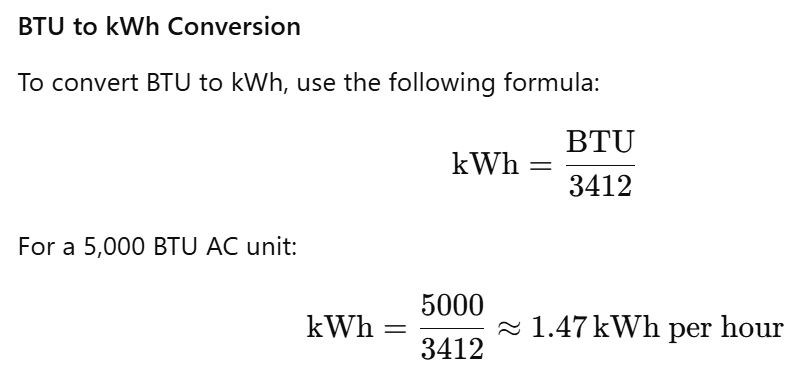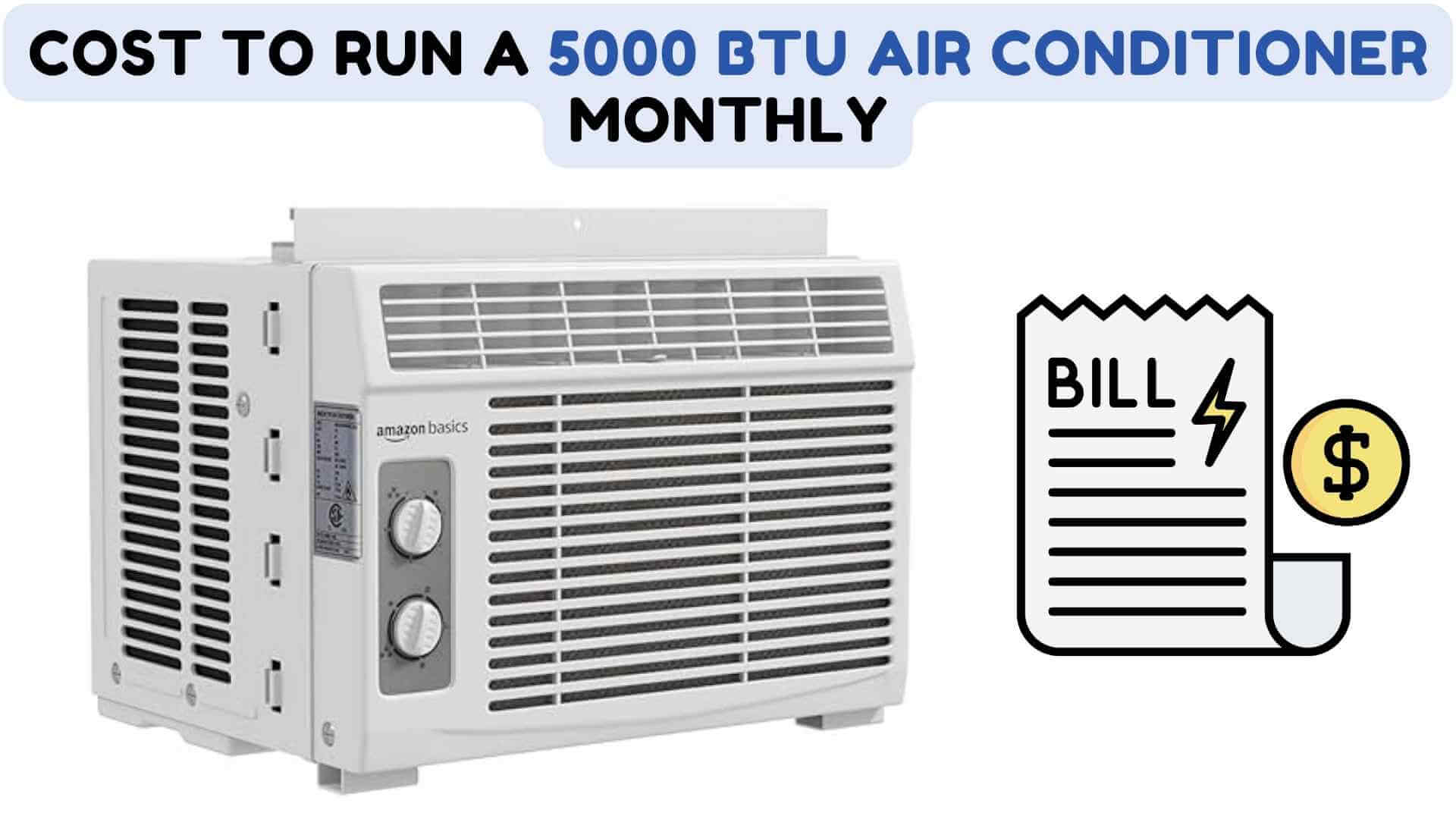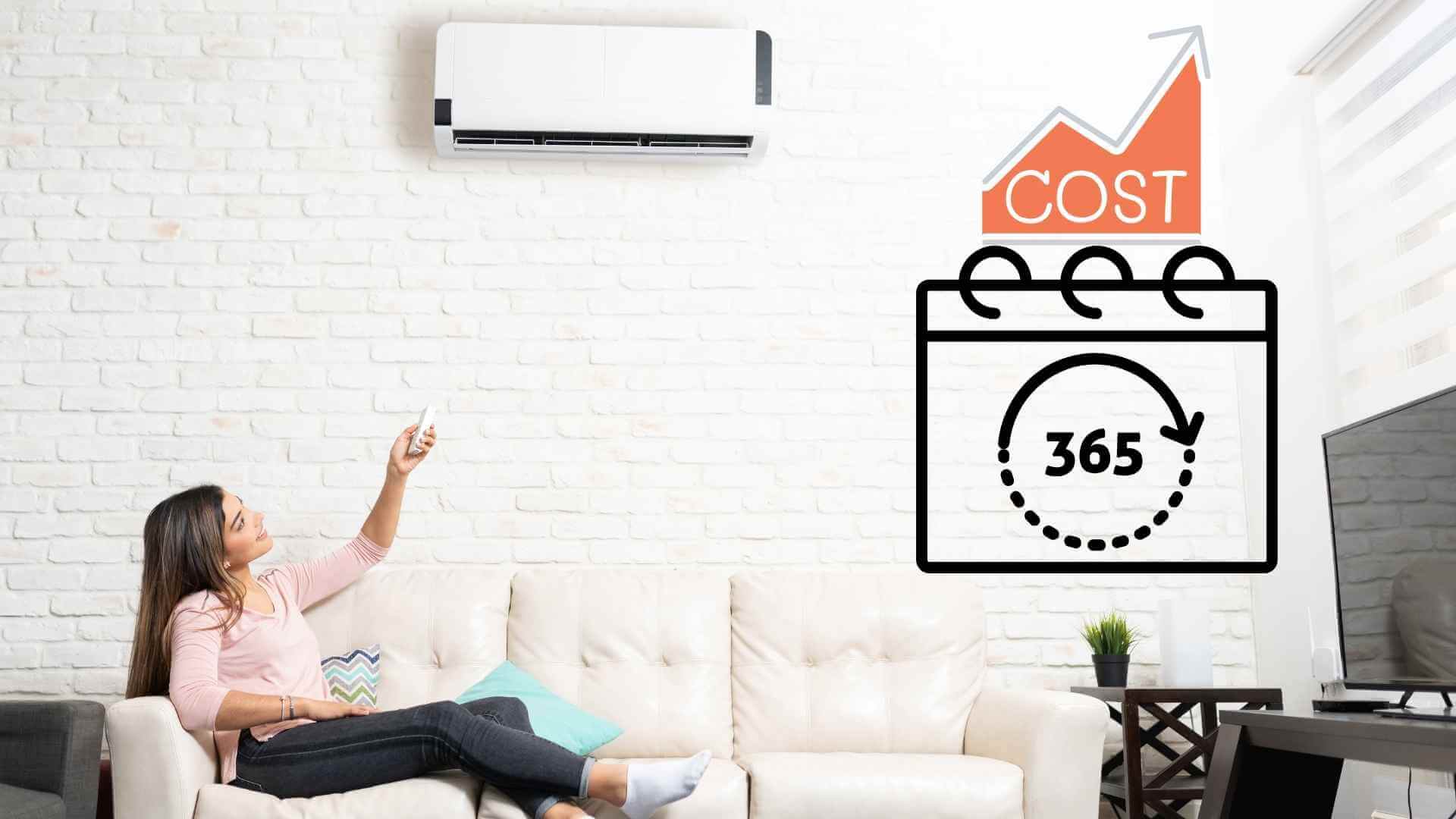Running an air conditioner (AC) is essential for comfort during the hot summer months, but it also comes with costs. If you’re considering a 5,000 BTU air conditioner, it’s important to understand how much energy it consumes and how this translates into your monthly electric bill.
This guide will provide a comprehensive breakdown of the factors affecting the cost of running a 5,000 BTU AC in the United States, from electricity costs to energy-efficient usage tips.
Understanding BTU and Energy Consumption
What Is BTU and How Does It Relate to Power Consumption?
BTU (British Thermal Unit) is a unit of energy used to measure the cooling power of an air conditioner. A 5,000 BTU air conditioner can cool a room of approximately 150 to 250 square feet, depending on insulation and external conditions. To understand its power consumption, we need to convert BTUs to kilowatt-hours (kWh), the standard unit of electrical energy used by utility companies in the USA.
BTU to kWh Conversion

This means that a 5,000 BTU air conditioner consumes approximately 1.47 kWh per hour of use. Understanding this is crucial when estimating your monthly electricity cost, as it provides a baseline for energy usage calculations.
Air Conditioner Energy Usage
Air conditioner energy usage is affected by several factors:
- AC Power Consumption: The more power an AC uses, the higher your electricity bill.
- Runtime Per Day: How long the AC runs each day significantly impacts your energy consumption.
Table: Estimated Monthly Energy Usage of a 5,000 BTU AC
| Hours per Day | kWh per Day | kWh per Month (30 days) | Cost per Month (Average $0.1745 per kWh) |
|---|---|---|---|
| 4 hours | 5.88 kWh | 176.4 kWh | $30.74 |
| 6 hours | 8.82 kWh | 264.6 kWh | $46.12 |
| 8 hours | 11.76 kWh | 352.8 kWh | $61.50 |
This table shows how the number of hours your AC runs each day can drastically affect the total energy consumption and the monthly bill.
Factors That Influence the Cost of Running a 5,000 BTU AC
1. Utility Rate per kWh in the USA
The utility rate per kWh USA varies significantly across different states. On average, U.S. residential electricity costs about $0.1745 per kWh. However, electricity rates can range from as low as $0.1169 in North Dakota to as high as $0.4244 in Hawaii. For example, if you’re in a state with a higher rate, your monthly AC bill will be higher.
Example of Electricity Cost Calculation:
- In California (with an average rate of $0.24 per kWh):
- If your 5,000 BTU AC runs for 6 hours a day, the daily cost is $2.12 ($0.24 x 8.82 kWh).
- Monthly Cost = $63.60 (at 30 days).
2. Energy Efficiency of the AC Unit
The seasonal energy efficiency ratio (SEER) is a key indicator of an AC unit’s efficiency. A higher SEER means better energy performance. Some air conditioners come with a high SEER rating, meaning they use less power to achieve the same cooling effect.
For instance, energy-efficient air conditioners use technologies like inverter compressors, which adjust power usage based on cooling needs, reducing energy waste.
Energy-Efficient AC vs. Standard AC
| Type | SEER Rating | Power Consumption (kWh) | Monthly Cost (Average $0.1745 per kWh) |
|---|---|---|---|
| Standard AC (5,000 BTU) | 10 | 1.47 kWh per hour | $61.50 for 8 hours/day |
| Energy-Efficient AC | 14 | 1.04 kWh per hour | $42.90 for 8 hours/day |
Using an energy-efficient unit can save you up to 30% on your monthly energy bill.
How Much Does It Cost to Run a 5,000 BTU Window AC?
A 5,000 BTU window AC is a common choice for cooling small rooms. The cost of running a window AC depends on factors such as air conditioner power consumption (how many watts AC uses), the runtime per day, and local electricity prices.
Monthly Electricity Usage of a Window AC
Given that a window unit typically uses around 500 watts per hour, its monthly electricity usage will depend on how long it runs each day.
Example: Calculating Monthly Bill for a 5,000 BTU Window AC
| Usage (hours/day) | Power Usage (kWh/day) | Cost per Day (at $0.1745/kWh) | Monthly Cost (30 days) |
|---|---|---|---|
| 4 | 2.0 | $0.35 | $10.50 |
| 6 | 3.0 | $0.52 | $15.60 |
| 8 | 4.0 | $0.70 | $21.00 |
This shows that cooling a small room with a 5,000 BTU window AC for 8 hours a day would cost around $21 per month in energy expenses.
How Can You Save on AC Costs?
Energy-Saving Tips for AC Use
There are several ways to reduce the electric consumption air conditioner:
- Use a Programmable Thermostat: Setting your AC to run only when needed helps limit its runtime and reduce energy consumption.
- Seal Leaks: Ensure your doors and windows are sealed properly to prevent cool air from escaping.
- Maintain Your AC Unit: Regular cleaning and servicing will ensure your AC is running efficiently.
- Upgrade to Energy-Efficient Units: Consider purchasing a low-watt AC unit or a unit with a high SEER rating to save on electricity costs.
- Use Fans: Ceiling fans or box fans can circulate cool air and help your AC run less frequently.
Use a Cooling Cost Calculator
Many online calculators can help you estimate cooling cost calculations based on your specific AC usage. These tools can help you determine energy cost estimation more precisely by factoring in local rates and usage patterns.
Conclusion: What to Expect on Your Monthly Electric Bill
In conclusion, the 5,000 BTU AC monthly bill in the USA can vary widely depending on how often it runs, the local electricity rate per kWh, and the energy efficiency of the unit. With proper care and usage, the monthly cost can range from $15 to $60, making it an affordable option for cooling a small room.
By implementing energy-saving tips for AC, maintaining your unit, and choosing an energy-efficient air conditioner, you can significantly reduce your home cooling expense and keep your summer electric bill air conditioning costs under control. For those concerned about rising costs, investing in a cooling cost calculator or an electricity usage calculator USA can offer valuable insights into your specific situation.
Final Thoughts
While the power consumption per BTU can seem small, over time, it adds up. Be sure to monitor your monthly electricity usage and consider seasonal energy efficiency ratios to make the most cost-effective decision when choosing an AC unit. Whether you’re cooling a small room or a larger space, the right air conditioner and usage habits can help keep costs low while maintaining comfort.
![AC Bill Calculator [2025] | Official Site](https://acbillcalc.com/wp-content/uploads/2025/07/cropped-acbillcalc-logo-250x79.png)


